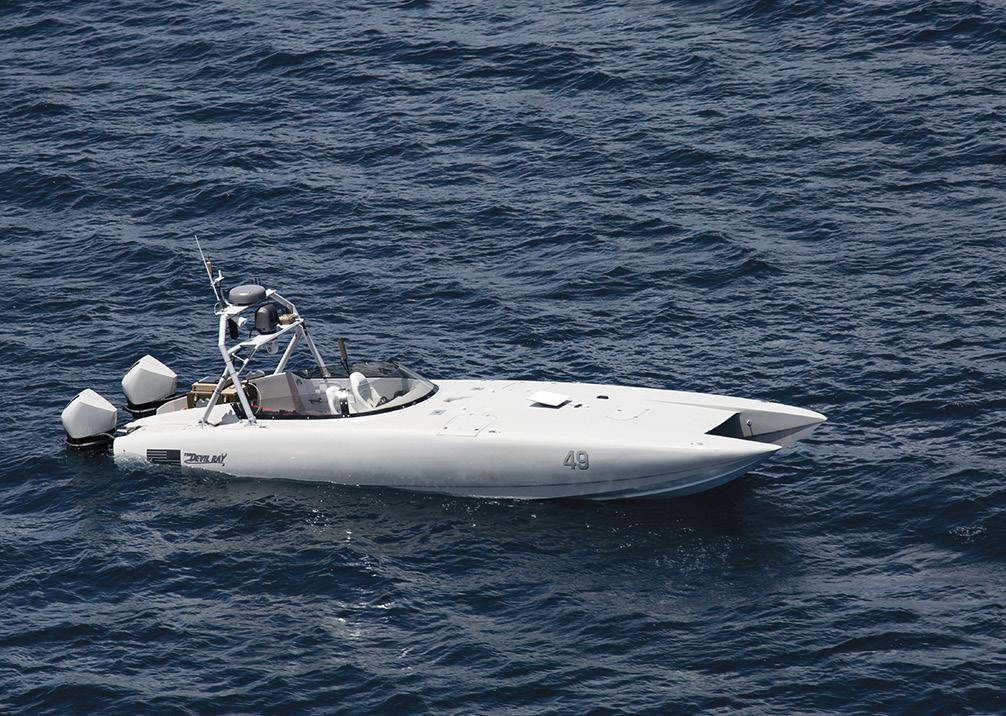Addressing the Mine Warfare Challenge with Maritime Autonomous Systems
The U.S. Navy is accelerating the testing and fielding of unmanned systems.
Week-after-week, headlines such as: “Navy, Marines Moving Ahead with Unmanned Vessel Programs,” appear in the defense media. Concurrently, other articles, such as: “When Will the U.S. Navy be Able to Autonomously Seek and Destroy Mines?” emphasize the U.S. Navy’s strong desire to take sailors out of the minefield.
That said, and recalling the challenges of the Navy’s DASH system as just one example, there have been many other cases where technologies were inserted as solutions to Fleet or Fleet Marine Forces’ needs, only to fail—often spectacularly—to live up to the promise their developers hoped for.
That is why the U.S. Navy would be well-served to leverage—and combine—technologies that have been examined by commercial and other government agencies, and tested extensively in Navy exercises, experiments, and demonstrations to field a near-term MCM capability.
Given the compelling need to apply new, innovative technologies to address the operational and tactical challenges posed by mines, as well as the need to expand the use of unmanned systems to tackle MCM challenges, the ability to meet this need with commercial-off-the-shelf (COTS) hardware and software—and not wager on emerging technologies that will take years to develop, mature and field—should be a priority for Navy and Marine Corps planners.
While a complete end-to-end technical description of all the details of the solution to the Navy’s MCM challenge is beyond the scope of this article, it is important to emphasize that the components of this system-of-systems are not based on just concepts or drawings or early-stage prototypes.
Rather, every component has been in the water and tested in the operational environment, specifically during a recent IBP exercise.
What We Demonstrated During Integrated Battle Problem
While MCM is a complex mission, it is worth breaking it down into its three basic parts: get to the minefield, find the mines, and neutralize the mines. This is the approach we took during our Integrated Battle Problem evaluation.
While this MCM solution is component agnostic, the leading commercial-off-the-shelf candidates for this solution were chosen for IBP based on their technical maturity, as well as their current use by various navies.
Leveraging these COTS systems will enable this MCM solution to move forward at an accelerated pace in order to deliver a speed to fleet capability in the near term. The basic elements of this solution include:
- The MARTAC Devil Ray T38 (thirty-eight foot) USV which is similar in size to an eleven-meter RHIB carried by many U.S. Navy ships and thus can be easily integrated aboard most U.S. Navy warships. It is the autonomous platform for the package, and hosts a communications and data transmission hub, in addition to above water and underwater sensors.
- The ThayerMahan Sea Scout Subsea Imaging System is specifically designed for missions such as mine hunting. The Sea Scout system is founded on the in-production COTS Kraken Robotics Katfish-180 tow-body mounted synthetic aperture sonar. The system is designed to search for mine-like objects (MLOs).
- The Pluto Gigas MNS ROV is an existing, stand-alone, third-generation mine-neutralization system with several systems deployed globally, and over 3,000 mines destroyed. The Pluto Gigas deploys an acoustically armed and detonated countermine charge. Several charges are loaded onto the T38 to enable single-sortie field clearance.
Leverage USVs to Enable the Rotary Wing Community to Focus On Other Missions
If the U.S. Navy wants to buy-down inherent technical risk and challenge the paradigm of long-cycle FAR acquisition in the deadly serious business of MCM, it is time to put a near-term solution in the hands of the U.S. Navy’s Sailors.
While complex programs of record are developing next-generation technology, we should invest in parallel-path solutions that leverage mature subsystems ready to provide “speed to capability” today.
Once the fleet sees the COTS solution that can be delivered with the system described above, we will be well on our way to providing the U.S. Navy with a way to defeat today’s deadly mine threat.
To be clear, this is not a platform-specific solution, but rather a concept.
While evolutionary in nature, this disruptive capability delivered using emerging technologies can provide the U.S. Navy with a near-term solution to the deadly mine threat and will keep Sailors and Marines out of the minefield and enable the extraordinarily capable MH-60S to perform other vital missions for which it is ideally suited.
This article was excerpted from a larger article published in Rotor Review Summer 2023.
Featured Photo: The Mantas T-12 unmanned surface vessel floats in the Pacific Ocean during the U.S. Pacific Fleet’s Integrated Battle Problem (IBP) 23.1. U.S. Navy photo by Mass Communication Specialist 2nd Class Lake Fultz, USN.

